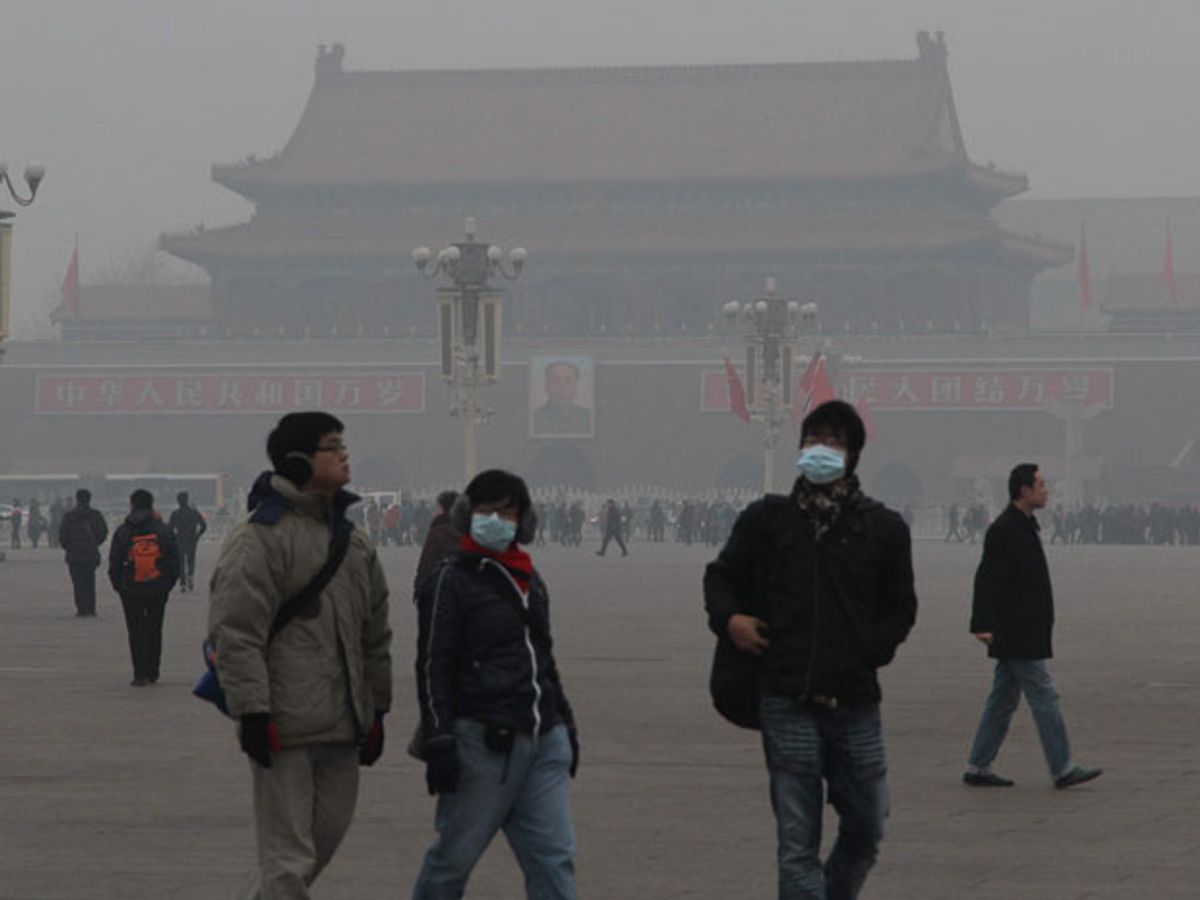Advocates for action on climate change have long urged the United States to make the first major move in limiting carbon dioxide emissions, with the hope that other big emitters around the world would follow suit. That seems to actually be happening now: only days after the United States announced a new rule that will cut emissions from power plants by 30 percent by 2030, China made some noise about instituting a carbon cap of its own.
As the Guardian reported on Tuesday, He Jiankun, chairman of China's Advisory Committee on Climate Change, told a conference that the Chinese government plans to limit the country's emissions both "by intensity an absolute cap." That would be huge, if true—developing nations like India, as well as China, have long promised only to limit carbon emissions based on intensity, meaning as a function of the country's economic growth. But China passed the United States way back in 2006 to become the world's champion in CO2 emissions; reducing the total amount is the only thing the atmosphere and a warming planet care about.
But we can't rejoice just yet. There is no official word out of China, and He did backtrack later in the day saying he was merely stating his personal views rather than any official position. And of course, the specific level of any absolute cap will be critical to assessing whether it will really help. China's previous CO2 goal was a 40 to 45 percent reduction in carbon intensity, compared to 2005 levels, by 2020. The country did launch a pilot carbon trading program in Shenzhen last year, but again, an absolute limit on emissions country-wide would represent an enormous shift in policy.
If China does set a cap, and the United States pushes ahead with its new 30 percent reductions from power plants rule, the landscape will be dramatically different as countries head to Bonn, Germany, for this year's round of climate talks. The talks in past years have ranged from downright useless to mildly promising (very mildly), but with the two biggest CO2 culprits in the world on board for actual, meaningful reductions, there may be a chance to convince others to jump in as well. As noted by Quartz this week, India in particular remains an outlier, and will account for a huge proportion of emissions increases in the 2020 to 2040 range.
Nothing concrete is expected out of Bonn this year, but there is optimism that next year's talks, COP21 in Paris, will result in a firm agreement. In a teleconference last year, The United Nations' top climate official Christiana Figueres stressed that no country was doing enough just yet on this front, and added some confusing explanations for why the last time there was optimism surrounding these negotiations, at COP15 in Copenhagen in 2009, it was an abject failure: "What is very different is that we all went to 2009 having made our own decision that governments had to come to an agreement. But there was actually no commitment of governments to come to an agreement." So, we had to agree to agree before actually agreeing.
How exactly coal-dependent countries like China will limit and eventually diminish their emissions is still up in the air, of course. But even mentioning an absolute cap is big step from where we've been.
Dave Levitan is the science writer for FactCheck.org, where he investigates the false and misleading claims about science that U.S. politicians occasionally make.



